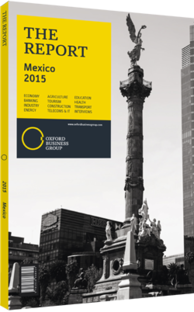Sovereign bond market: 20 years on, Mexico becomes an emerging market success story
In the 20 years since the Tequila Crisis, Mexico has undergone an impressive transformation. The implementation of sound macroeconomic policies has been welcomed by global investors, resulting in greater confidence in the country’s credit risk profile, while recent structural reforms are expected to boost growth, investment and competition. Mexico has emerged as an attractive market for investors seeking balanced strategies in an emerging market context – namely, interesting yields and well-contained risk. The country has been classified as investment grade by major ratings agencies, with an “A3” rating from Moody’s and a “BBB+” by Standard & Poor’s and Fitch, and is headed towards a select group of emerging markets – the “A-rated” club.
Local Yield Curve
International markets have provided the government with the opportunity to improve its debt profile by extending the maturity of outstanding debt and gaining access to lower financing costs. In the years since the Tequila Crisis, diversification of the sources of funding has been an important achievement for the country. In 1995 Mexico’s debt mix was roughly 20% domestic debt and 80% external debt; by 2014 this was reversed, with 70% in peso-denominated securities and 30% in foreign-currency bonds.
The development of the peso-denominated yield curve (fixed-rate Mbonos) reflects the new Mexican paradigm in the global fixed-income market. In the wake of 1994-95, the yield curve only extended to maturities of up to one year. Twenty years on, the market boasts 30-year securities, with programmed auctions of different maturities (3-, 5-, 10-, 20- and 30-year bonds) that serve as benchmarks, creating favourable liquidity conditions in the secondary market. For its part, local debt maturities increased from 0.3 years to 5.2 years between 1995 and 2014.
In addition, the Mexican government has issued a wider variety of peso-denominated securities to satisfy a wide range of investor needs. Securities include short-term zero-coupon federal Treasury certificates (Certificados de la Tesorería, Cetes), with maturities of up to one year; long-term fixed-rate Mbonos (up to 30 years); floating-rate government development bonds (Bonos de Desarrollo del Gobierno Federal, Bondes) of up to five years; and real-rate Mexican linkers, or Udibonos (up to 30 years). The development of the peso-denominated yield curve has been accompanied by the growth of a deep, liquid derivatives market, with interest rate swap tenors of up to 30 years.
Main Players
Foreign investors have become the most important market participants in Cetes and Mbonos, particularly since 2002 when Mexican sovereign bonds gained investment grade status. As of May 2015, foreigners held short-term Cetes worth MXN523bn ($35.2bn), equivalent to almost 50% of the total, followed by local mutual funds (7%) and pension funds (7%). Foreign investors are also the primary holders of Mbonos, with MXN1.5trn ($101bn), or 60% of the market, followed by pension funds (17%) and banks (2%). Local institutional investors dominate Udibonos and Bondes, with 67% and 48%, respectively.
Global Bond Appetite
A catalyst for foreign investor interest came in 2010, when Mexico joined the Citigroup World Government Bond Index (WGBI). Government bonds started with a 0.65% share, up to 0.83% by January 2015. Prior to its admittance to the WGBI, Mexican securities were already included in several indices, such as JP Morgan’s GBI Broad and Barclays’ Universal Government Inflation-Linked Bond Index.
The country’s strong fundamentals have allowed the government to seek financing abroad. Appetite for foreign-currency denominated bonds has increased so dramatically in recent years that the country has been able to issue 100-year bonds on three different occasions, starting in October 2010, when it issued a $1bn foreign-currency denominated bond, followed by two more offerings in 2014 – the last of which was denominated in British pounds. These results demonstrate an attractive view of Mexican debt, differentiating it from other emerging markets thanks to its sound macroeconomic fundamentals and favourable risk-return mix.
You have reached the limit of premium articles you can view for free.
Choose from the options below to purchase print or digital editions of our Reports. You can also purchase a website subscription giving you unlimited access to all of our Reports online for 12 months.
If you have already purchased this Report or have a website subscription, please login to continue.

